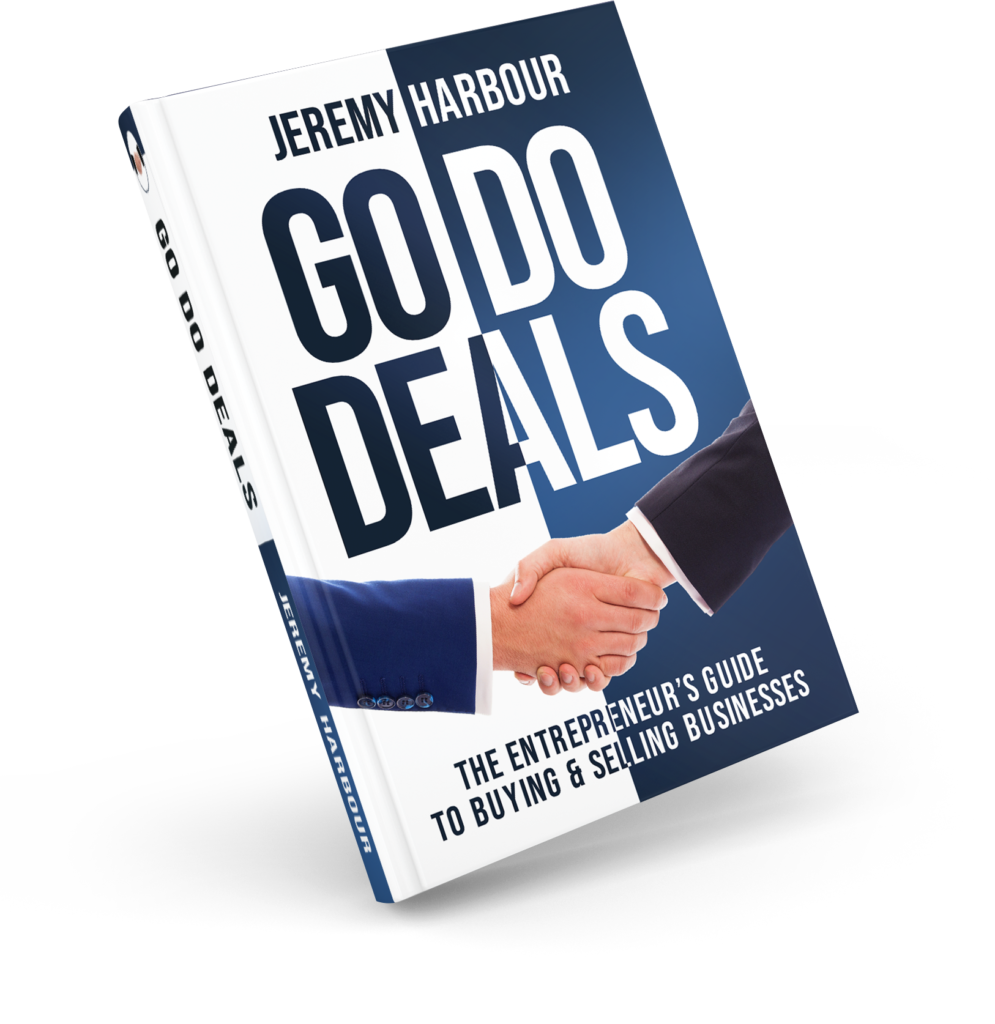One question I’m frequently asked is how I started buying businesses with no money down? Well, it happened a bit by accident, and was the best thing that could have happened.
I started a telecommunications company in 1997. We didn’t have a retail shop—we either shipped phones to our customers or they came by and picked them up. After running the business for a few years, I noticed that I was regularly being approached by other telecom companies who wanted to buy my business. Interestingly, they all had one thing in common: they had no money—well, none that they were willing to give me. What they offered were deal structures with what I call “jam tomorrow” (an empty, useless promise of something that will never arrive or be fulfilled) and a solution to some of the pain/problems of running a business.
So why wasn’t I thinking like this? After all, I didn’t have any money either! Maybe I should be the buyer and not the seller? I wasn’t thinking strategically. I wasn’t acting like an entrepreneur. I was basically a glorified salesperson.
In the end, I met with several potential buyers but couldn’t decide on any deal, and my thinking went full circle. I decided that I was going to be the buyer, and thus began my journey to acquire another business.
With this new idea firmly implanted in my brain, I knew my next step was to have strategic conversations and get in front of a lot of people, so I went networking.
Finding a Seller
At one networking event, I came across another telecom company. They’d been around for thirteen years and had some really good retail and business customers. (One of their customers was Nintendo.) I was pretty young and unconvincing at the time, so it was lucky for me that the owner had a perfect storm of motivations for selling. His three urgent and pressing needs helped me to break my deal virginity and get that first deal done. It was also at this moment I learned a very important lesson: determining the seller’s motivation for selling is critical when buying another business.
This owner’s three motivations to sell were:
- The ticking time bomb: He operated from a retail outlet. The lease on his shop was about to expire, and the landlord had decided to bulldoze the building and turn it into apartments. His ticking time bomb was his need to be out of the premises within a specific time frame and was furiously looking for a new base. He’d estimated it was going to cost him around £70,000 to move. With a net profit of £12,000 last year, he knew the next few years’ profits were going to be eaten up by the forced move. He wasn’t relishing running the business for another six years of his life just to stand still.
- The frustration of changing goalposts: At the time, there were only two internet service providers, and theirs would regularly change their rules and operating procedures. This frequently caused issues with customers and was incredibly frustrating to the owner.
- Shiny new object syndrome: All entrepreneurs suffer from this: their favorite business is always the next one. They want to rush out and deploy the idea they came up with in the shower. And when they start that side hustle, they end up loving it more than the old business.
In this case, the owner of the telecom business was buying small-terraced houses and converting them into two apartments. Whenever he did one of these conversions, he made about £70,000 profit. He was doing a couple a year, but could do six a year if he had more time. He loved doing those property conversions. It was that passion that got him up in the morning and was a powerful motivation.
At the Harbour Club, we discuss strategies for buying a business for no money down.

So, those three motivations—the ticking time bomb of lease expiration, his service provider driving him insane, and the fact that he could make more money if he wasn’t running the telecom business—were enough to drive him to do the deal.
Making It Happen
So, we had a deal, but my next challenge was that I didn’t know how to buy a company.
At the networking and breakfast meetings, I would pepper lawyers and accountants with questions, and the overriding response from the lawyers was not to buy the company but to buy the assets instead. (We explore this topic fully in the Harbour Club as I now do not believe this to be the best way to do it.) But back then, I was told to just buy the assets, so that’s what I set out to do.
Now, using an asset purchase agreement was a bit like using a sledgehammer to crack a nut, especially given the size of this deal. But, after numerous discussions, the owner and I decided the easiest way to do this would be to write a letter of agreement that we would both sign, specifying what assets were being sold, for what price, and on what terms.
He wanted £15,000 upfront for all of the customers, stock, and goodwill. Now, if I’d had £15,000 in the bank, I’d have written a check right then and there. The deal was worth a huge amount of money to me right away because, just by switching their customers over to my service provider, I could get a six-figure windfall. But my choice that month was to pay my credit card bill or my staff, so the idea of paying £15,000 for an acquisition wasn’t even in the cards.
I came up with various proposals for how I could pay the owner. He said he would take £10,000 upfront and a little bit “tomorrow” (as in the Spanish translation, meaning “later”). Then he asked for £5,000 upfront and the rest tomorrow. In my naivety, I didn’t realize that I was the only horse in the race. With only a few weeks left on his lease, he was never going to find someone who could complete the due diligence and come up with the cash in such a short period of time. But in my head, he had other opportunities, and if I didn’t strike quickly, I was going to lose out on an amazing deal.
So, I continued to negotiate and try to find the money. It got down to £2,500 upfront, and I couldn’t even lay my hands on that. The only deal that could happen was ZERO upfront.
We closed the deal the day the bulldozers were due to arrive. We signed the agreement, loaded all of the contents of the shop into a van, and drove back to my office a few miles away.
GO TO DEALS HEREAfter I acquired that business, I had the most incredible feeling—like I’d found a door to another dimension and walked in it. I’d been so wedded to the idea that you had to start a business, and success came from all the hard work. Yet, I’d grown by a year’s worth of sales in an afternoon without any sales/marketing, no risk, no cash.
It’s true: Necessity is the mother of invention. If I’d had the money in the bank, I would have paid it, and then missed out on all that I’ve learned since.
I’m often asked, “How do you buy a business without any money,” and my facetious answer is always, “It’s really easy. First, you start with no money, and then you go and try and buy a business.” That was the only option available to me.
I frequently say—and mentioned it in my last blog—you don’t have to run a marathon to grow your business. You can just run the last ten yards and still get the medal. By acquiring a business as a growth strategy, it’s possible to grow by a year’s worth of sales in an afternoon. This forced me to think more strategically, more like an investor or shareholder. I’d found a hack for value creation that didn’t involve blood, sweat, and years.
In my next blog, I’ll discuss the importance of getting that first deal under your belt and focusing on the strategic areas of the company.
Until then, tell me how you felt the first time you accomplished something big in your entrepreneurial career. Did you feel like I did when I acquired that company with no money down?
Let’s Connect!




